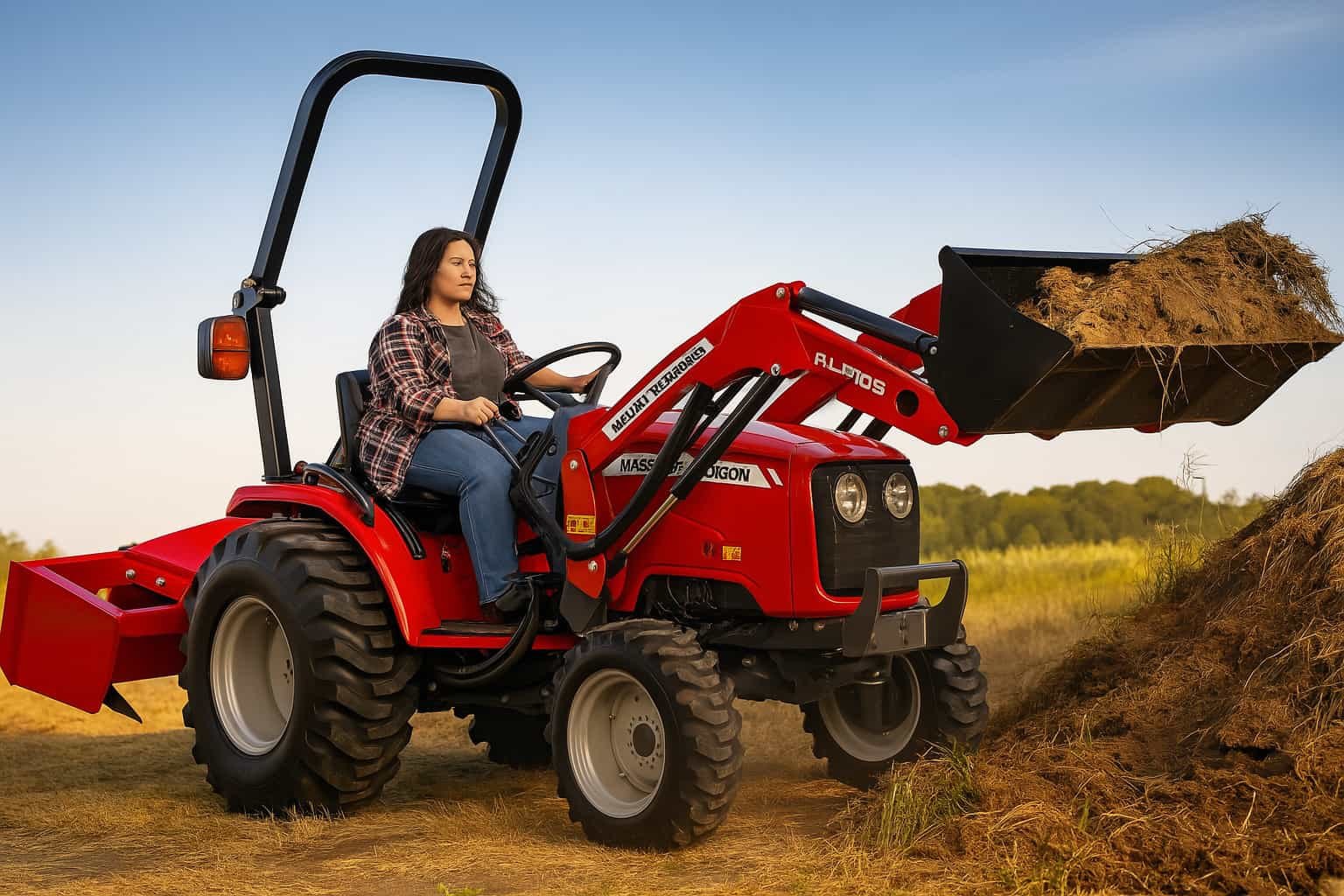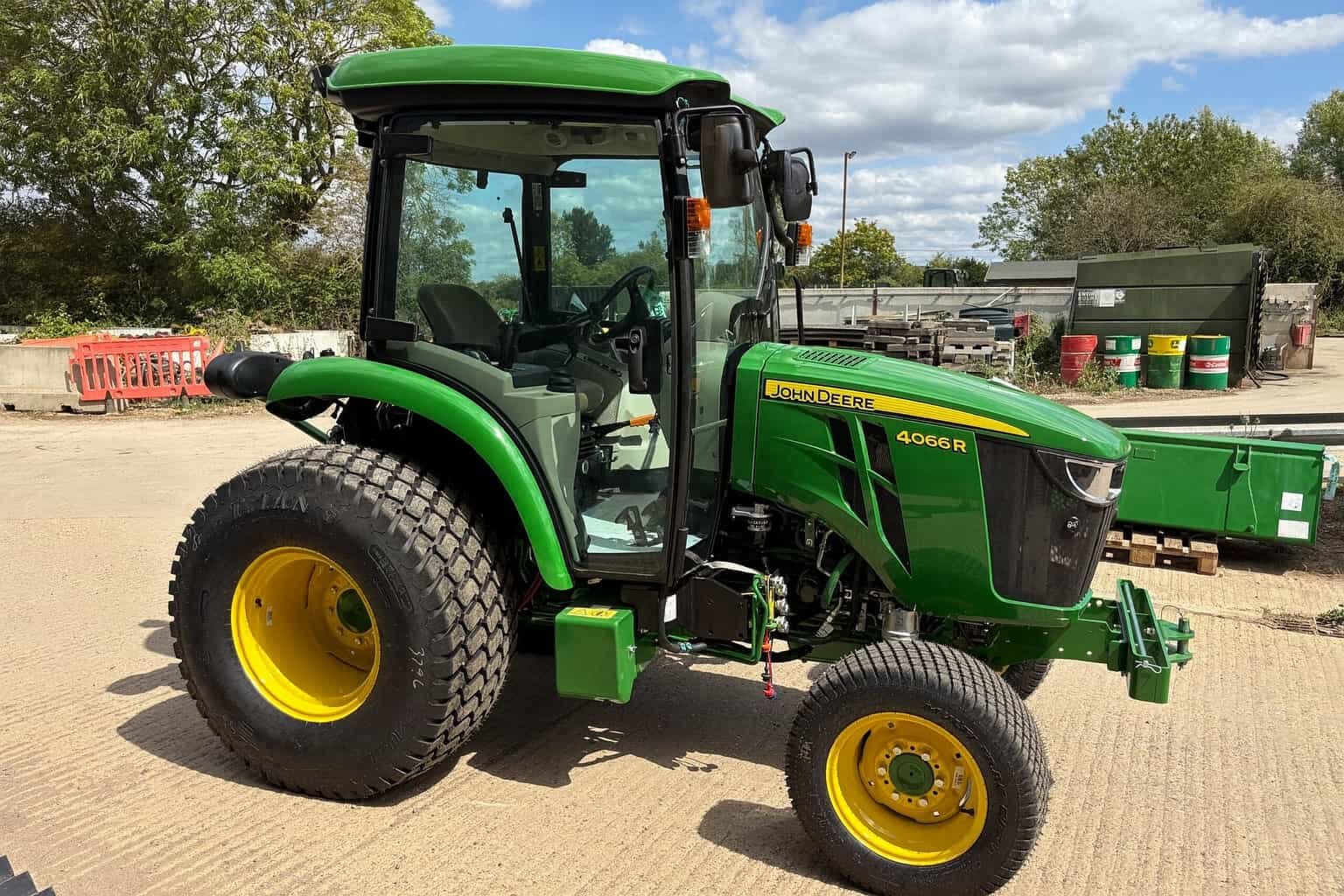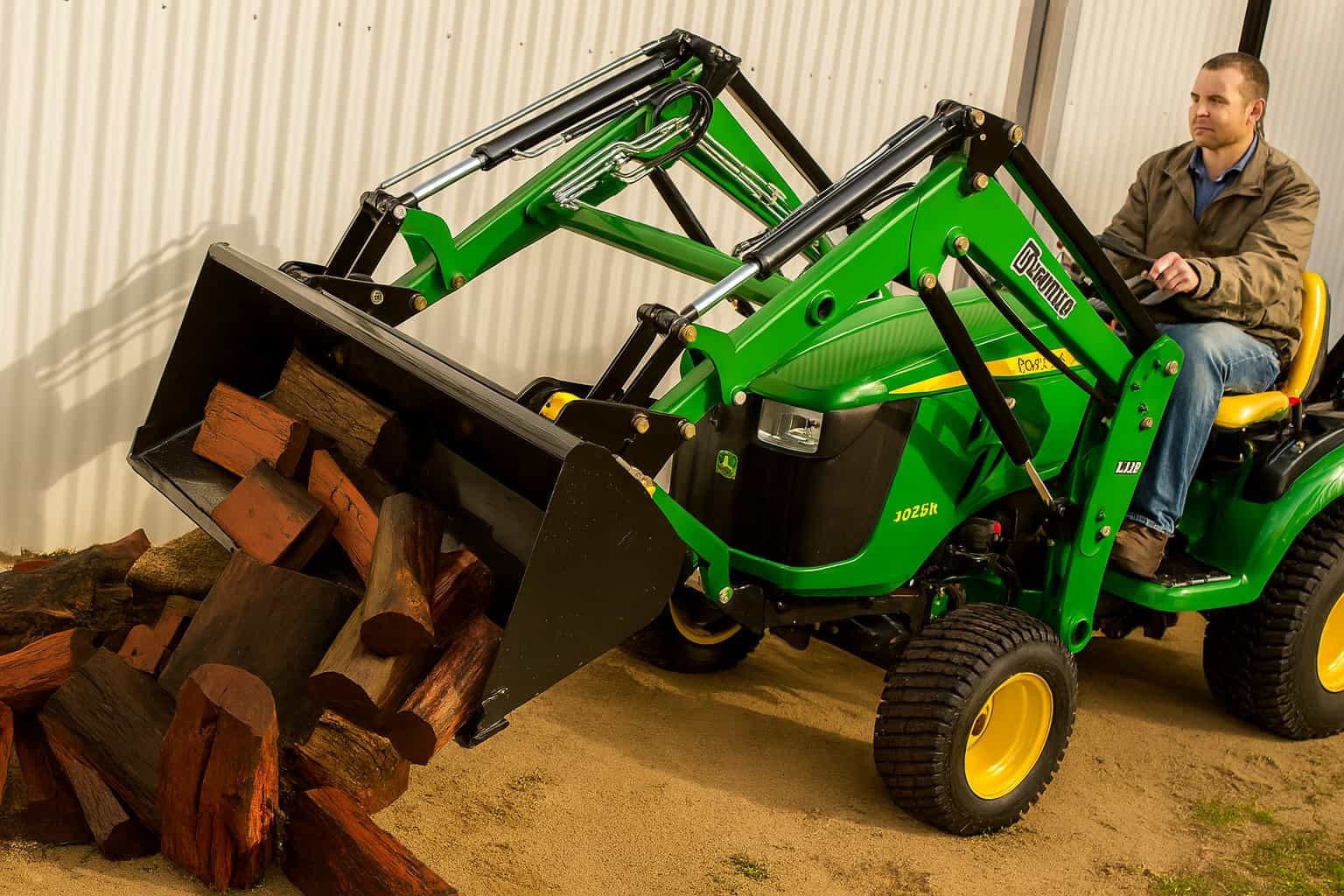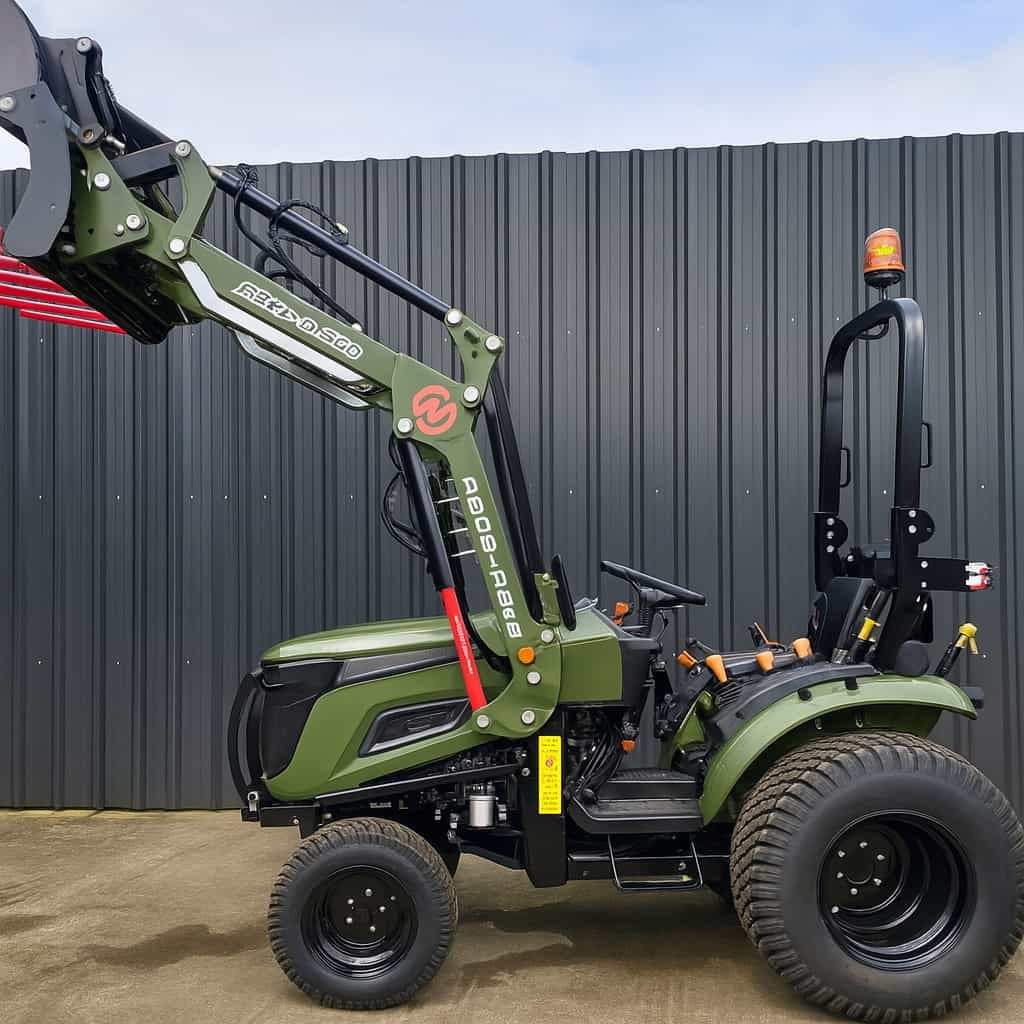What is a Compact Tractor?
A compact tractor is a small, versatile agricultural machine designed for tasks on smaller farms, landscapes, and gardens. It typically features a powerful engine, 20-50 horsepower, and is equipped with various attachments.

Key Features of a Compact Tractor:
- Size and Maneuverability:
- Smaller than traditional tractors
- Easy to navigate tight spaces
- Engine Power:
- Generally ranges from 20 to 50 horsepower
- Suitable for light to medium-duty tasks
- Versatility:
- Compatible with multiple attachments like mowers, loaders, and backhoes
- Can handle plowing, tilling, and hauling
- Ease of Use:
- Simple controls
- Ideal for hobby farmers and residential use
Common Uses:
- Lawn and garden maintenance
- Light construction
- Landscaping tasks
- Small-scale farming
Compact tractors are essential for anyone needing a robust yet manageable solution for various agricultural and landscaping tasks.
Is it Worth Buying a Compact Tractor?
Yes, buying a compact tractor is worth it for small to medium-sized farms, landscaping projects, and property maintenance. These versatile machines offer efficiency, ease of use, and cost-effectiveness for various tasks.

Benefits of Compact Tractors
- Versatility: Compact tractors can handle multiple tasks such as mowing, tilling, and hauling.
- Cost-Effective: They are generally less expensive than full-sized tractors and have lower operating costs.
- Maneuverability: Their smaller size allows them to navigate tight spaces easily.
- Ease of Use: User-friendly controls make them accessible even for those with minimal experience.
Considerations
- Task Requirements: Assess the specific tasks you need to perform and ensure a compact tractor meets those needs.
- Budget: Evaluate your budget for both initial purchase and ongoing maintenance.
- Resale Value: Compact tractors often maintain good resale value, making them a sound investment.
In conclusion, a compact tractor can be a valuable asset for various agricultural and property management needs, provided it aligns with your specific requirements and budget.
What’s the difference between a compact tractor and a utility tractor?
A compact tractor is smaller and more maneuverable, designed for tasks like mowing, landscaping, and light construction. A utility tractor is larger, more powerful, and suited for heavy-duty farming, large-scale landscaping, and industrial applications.
Key Differences:
- Size and Maneuverability:
- Compact Tractor: Smaller, easier to navigate in tight spaces.
- Utility Tractor: Larger, requiring more space to operate.
- Power and Capability:
- Compact Tractor: Less horsepower, suitable for light-duty tasks.
- Utility Tractor: Higher horsepower, built for heavy-duty tasks.
- Attachment Compatibility:
- Compact Tractor: Limited to smaller attachments.
- Utility Tractor: Can handle a wider range of larger, more robust attachments.
- Typical Uses:
- Compact Tractor: Residential lawn care, small-scale gardening, and minor landscaping.
- Utility Tractor: Large-scale farming, construction projects, and extensive land management.
Understanding these distinctions helps in selecting the right tractor for your specific needs, ensuring efficiency and productivity.
How long will a compact tractor last?
A well-maintained compact tractor can last between 15 to 25 years or approximately 5,000 to 10,000 hours of operation. The lifespan depends on usage, maintenance, and operating conditions.

Key Factors Affecting Longevity
- Maintenance: Regular oil changes, filter replacements, and timely repairs significantly extend the tractor’s life.
- Usage: Light agricultural work or occasional use causes less wear compared to heavy, continuous use.
- Operating Conditions: Operating in harsh environments like extreme temperatures or rugged terrain can reduce lifespan.
Maintenance Tips
- Routine Checks: Regularly inspect for wear and tear.
- Proper Storage: Store in a dry, sheltered place to avoid rust and corrosion.
- Quality Parts: Use manufacturer-recommended parts and fluids.
By adhering to these practices, the tractor’s operational life can be maximized, ensuring reliable performance over the years.
What is the function of a compact tractor?
A compact tractor is designed for various agricultural and landscaping tasks, offering versatility, efficiency, and ease of use in a smaller, more maneuverable form than larger tractors.

Key Functions of a Compact Tractor:
- Land Preparation: Plowing, tilling, and harrowing small to medium-sized fields.
- Mowing: Cutting grass and maintaining lawns, pastures, and fields.
- Material Handling: Loading, lifting, and transporting heavy materials like soil, gravel, and hay bales.
- Snow Removal: Clearing snow from driveways, paths, and small roads using plows or snow blowers.
- Digging and Excavation: Using backhoes or other attachments for digging trenches, ditches, and post holes.
- Planting and Seeding: Assisting in sowing seeds and planting crops with precision.
Advantages:
- Compact Size: Easier to maneuver in tight spaces and less impact on the terrain.
- Versatility: Supports numerous attachments for various tasks.
- Efficiency: Suitable for small to medium-sized farming and landscaping operations.
In summary, compact tractors are multi-functional machines that enhance productivity in smaller-scale agricultural and landscaping tasks.
What is the Difference Between a Compact and a Subcompact Tractor?
A compact tractor is larger and more powerful than a subcompact tractor. Compact tractors typically have more horsepower, advanced hydraulic systems, and greater lifting capacity, making them suitable for heavier tasks.
Key Differences:
- Size:
- Compact Tractor: Larger, heavier frame.
- Subcompact Tractor: Smaller, lighter frame.
- Horsepower:
- Compact Tractor: Generally ranges from 25 to 60 HP.
- Subcompact Tractor: Usually ranges from 15 to 25 HP.
- Hydraulic System:
- Compact Tractor: More advanced, supports a wider range of attachments.
- Subcompact Tractor: Basic, limited to lighter attachments.
- Lifting Capacity:
- Compact Tractor: Higher lifting capacity, suitable for heavier loads.
- Subcompact Tractor: Lower lifting capacity, ideal for light-duty tasks.
- Intended Use:
- Compact Tractor: Suitable for medium to large properties, farming, and construction.
- Subcompact Tractor: Best for small properties, gardening, and light landscaping.
In summary, the choice between a compact and a subcompact tractor depends on the scale and intensity of the tasks you need to perform.

